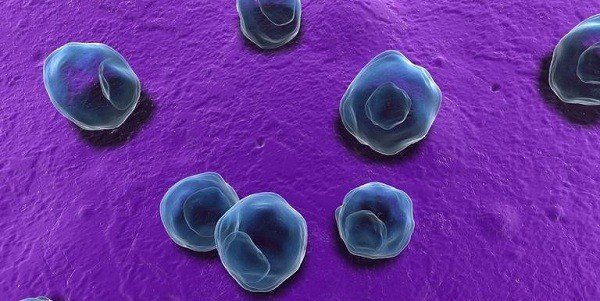Pneumochlamydia

Pneumochlamydiosis is a disease related to the anthroponoses, characterized by an acute onset, fever and primarily the respiratory organs.
Etiology
The cause is Chlamydia pneumoniae. To distinguish it from other chlamydiases, this disease is called pneumochlamydia. The causative agent of the disease was described for the first time relatively recently.
In 1965, on the island of Taiwan, in a sample taken from the conjunctiva of a sick child, a microbial agent called TW 183 was isolated, subsequently in the USA in 1983, an infectious agent AR was isolated from the pharyngeal secretion of a patient with an acute respiratory disease 39.
After establishing the identity of these two pathogens, they began to be referred to in the literature as the TWAR strain. The detailed study of their properties allowed them to be referred to chlamydia.
This new type of chlamydia was subsequently named Chlamydia pneumoniae. It has properties characteristic of other chlamydia, it is also an intracellular parasite, but under electron microscopy the intracellular inclusions differ in morphology to some extent from those formed during the intracellular reproduction of other chlamydia.
The DNA of chlamydia pneumoniae is also specific, the similarity with that of other chlamydia is only about 10%. In the complement binding reaction, a cross-reaction with chlamydia antigens Ch.psittaci, Ch. Trachomatis.
But in the microimmunofluorescence reaction, Chlamydia pneumoniae differs significantly from other chlamydia. Although Ch. Pneumoniae was first isolated in a patient with eye involvement, this Chlamydia is not essential in the etiology of conjunctivitis. It is mainly associated with affecting the respiratory organs.
And that is why, when examining patients with acute pneumonia, positive reactions indicating infection with chlamydia pneumoniae vary from 6 to 17% in different years, and from 3 to 8% for bronchitis. Chlamydia in the external environment is not resistant.
About 24% is stored at 4°C in a transport medium for body fluid samples.
Inactivated by repeated freezing and thawing.
Like other chlamydia, pneumonitis is sensitive to tetracycline and erythromycin and is resistant to penicillin, ampicillin, sulfonamides. It can be cultured on the developing chicken embryo and in cell cultures. There is only one serological variant.
Epidemiology
The source of infection is the sick person. Transmission of chlamydia pneumoniae is carried out by airborne droplets. Pneumochlamydia occurs not only sporadically, but in the form of epidemic outbreaks, especially in organized collectives.
Since 4 pneumonia epidemics were observed in Finland from 1977 to 1985, the incidence varied from 60 to 84 per 1000 population.
The origin of the pneumonia was discovered through the complement binding reaction /PSK/ and microimmunofluorescence reaction. Mostly young soldiers got sick.
The epidemic outbreak lasted several months with a lull, and in one of the garrisons it lasted from July to December, and the other lasted from January to June with a peak in April-May. This is probably related to the long incubation period.
A subcooling connection has not been established. When observing the civilian population, the incidence was highest among persons aged 20 to 49.
What are the symptoms?
The incubation period has not been established, although the duration of epidemic outbreaks suggests a longer duration.
Pneumnonic forms of chlamydia begin acutely as the body temperature rises to 37.5-39 degrees Celsius, signs of general intoxication appear, pain in the muscles, throat and chest.
A dry cough also appears initially, in most cases, about 80% of the pathological process is bilateral.



